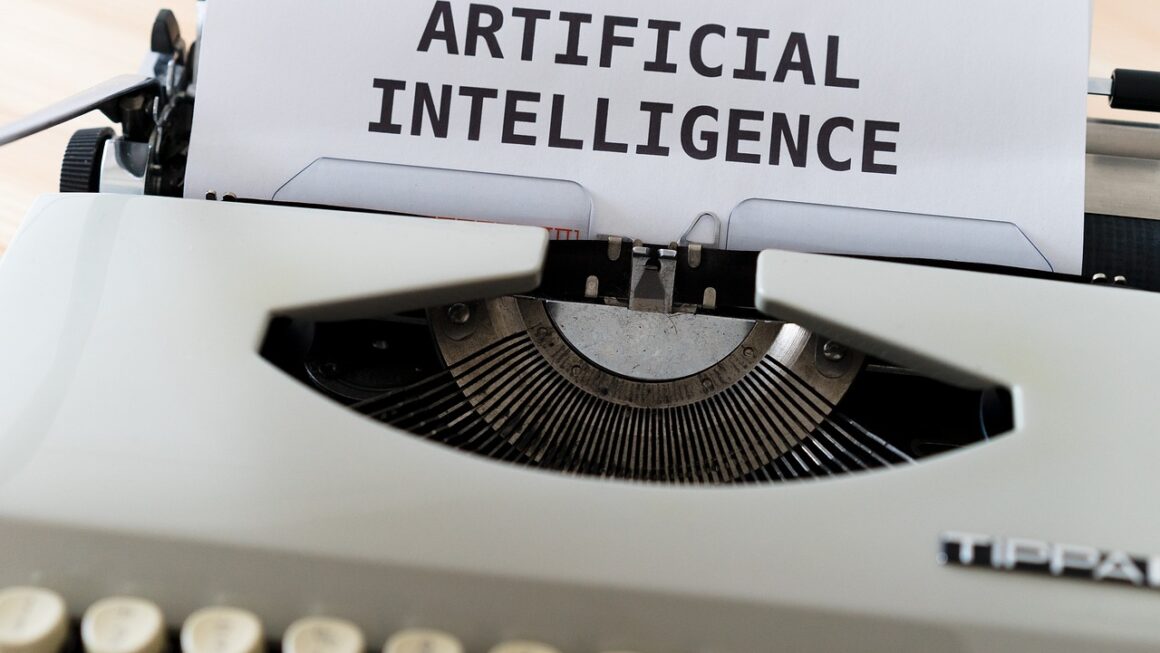Harnessing the power of artificial intelligence (AI) is transforming industries across the globe, and the energy sector is no exception. From optimizing energy production and consumption to predicting equipment failures and enabling smart grids, AI’s potential to revolutionize how we generate, distribute, and use energy is immense. This article explores the diverse applications of AI in energy, offering insights into its benefits, challenges, and future prospects for a more sustainable and efficient energy landscape.
AI-Powered Energy Efficiency
Optimizing Energy Consumption
AI algorithms can analyze vast amounts of data from various sources, including smart meters, weather forecasts, and building management systems, to predict energy demand patterns. This allows energy providers and consumers to optimize their energy consumption in real-time, reducing waste and lowering costs.
- Example: Google’s DeepMind AI has been used in data centers to optimize cooling systems, resulting in significant energy savings. The AI analyzes historical data and real-time sensor readings to predict cooling needs and adjust system parameters accordingly.
- Benefit: Reduced energy bills for consumers and decreased operational costs for businesses.
Smart Building Management
AI-powered building management systems can learn occupancy patterns, adjust lighting and HVAC systems accordingly, and identify areas of energy waste.
- Features:
Automated lighting control based on occupancy.
Predictive maintenance of HVAC systems.
* Real-time energy monitoring and reporting.
- Practical Tip: Implement smart thermostats and sensors in your home or office to gather data and automate energy-saving adjustments.
Grid Optimization and Load Balancing
AI can analyze grid conditions in real-time and optimize the distribution of electricity to prevent overloads and ensure a stable power supply.
- Details: AI algorithms can predict peaks in demand and adjust power generation accordingly, ensuring a balanced and reliable grid.
- Statistic: Studies have shown that AI-powered grid optimization can reduce energy losses by up to 10%.
Enhancing Renewable Energy Integration
Forecasting Renewable Energy Output
Renewable energy sources like solar and wind are inherently intermittent, making it challenging to integrate them into the grid. AI can help by accurately forecasting the output of these sources, enabling better planning and grid management.
- Example: Companies like GE Renewable Energy use AI algorithms to predict wind turbine output based on weather forecasts, historical data, and turbine performance.
- Benefit: Improved reliability and efficiency of renewable energy sources.
Optimizing Energy Storage
AI can optimize the charging and discharging of energy storage systems, such as batteries, to maximize their lifespan and efficiency.
- How it Works: AI algorithms analyze grid conditions, energy prices, and battery performance to determine the optimal charging and discharging schedule.
- Feature: Predictive analytics for battery health monitoring and maintenance.
Smart Inverters and Grid Stability
AI-powered smart inverters can respond to grid fluctuations in real-time, providing voltage and frequency support and enhancing grid stability.
- Details: These inverters use AI algorithms to adjust their output based on grid conditions, helping to maintain a stable and reliable power supply.
- Actionable Takeaway: Invest in smart inverters for your solar panels to improve grid integration and maximize the value of your renewable energy investment.
Predictive Maintenance and Asset Management
Identifying Equipment Failures
AI can analyze sensor data from equipment like turbines, transformers, and generators to detect anomalies and predict potential failures.
- Example: Siemens uses AI-powered predictive maintenance solutions for its gas turbines, enabling operators to identify and address potential issues before they lead to costly downtime.
- Benefit: Reduced maintenance costs and improved equipment reliability.
Optimizing Maintenance Schedules
AI can optimize maintenance schedules based on equipment condition and operational data, reducing unnecessary maintenance and extending equipment lifespan.
- How it Works: AI algorithms analyze historical data, sensor readings, and maintenance records to determine the optimal time for maintenance interventions.
- Practical Tip: Implement a condition-based maintenance program using AI-powered analytics to optimize your maintenance schedules.
Improving Asset Utilization
AI can optimize the utilization of energy assets by predicting demand patterns and adjusting operations accordingly.
- Details: This can involve optimizing the dispatch of power plants, adjusting the output of wind turbines, or managing the charging and discharging of energy storage systems.
- Statistic: Predictive maintenance can reduce unplanned downtime by 30-50%.
Enhanced Energy Trading and Risk Management
Predicting Energy Prices
AI can analyze market data, weather forecasts, and geopolitical events to predict energy prices, enabling traders to make more informed decisions.
- Example: Energy trading firms use AI algorithms to predict electricity prices based on historical data, weather forecasts, and demand patterns.
- Benefit: Improved profitability for energy traders and reduced price volatility for consumers.
Optimizing Trading Strategies
AI can optimize trading strategies by analyzing market trends and identifying opportunities for arbitrage and hedging.
- How it Works: AI algorithms can identify patterns in market data that are not readily apparent to human traders, enabling them to make more profitable trades.
- Feature: Automated trading systems that execute trades based on AI-driven insights.
Managing Risk and Compliance
AI can help energy companies manage risk and comply with regulations by monitoring market conditions and identifying potential violations.
- Details: AI algorithms can analyze trading activity to detect insider trading and other forms of market manipulation.
- Actionable Takeaway: Implement AI-powered risk management systems to monitor market conditions and ensure compliance with regulations.
Conclusion
AI is rapidly transforming the energy sector, offering a wide range of benefits, from increased efficiency and improved reliability to enhanced renewable energy integration and optimized trading strategies. While challenges remain, such as data privacy concerns and the need for skilled personnel, the potential of AI to create a more sustainable and efficient energy future is undeniable. As AI technology continues to evolve, we can expect even more innovative applications to emerge, further revolutionizing how we generate, distribute, and consume energy. The future of energy is intelligent, and AI is the key to unlocking its full potential.




